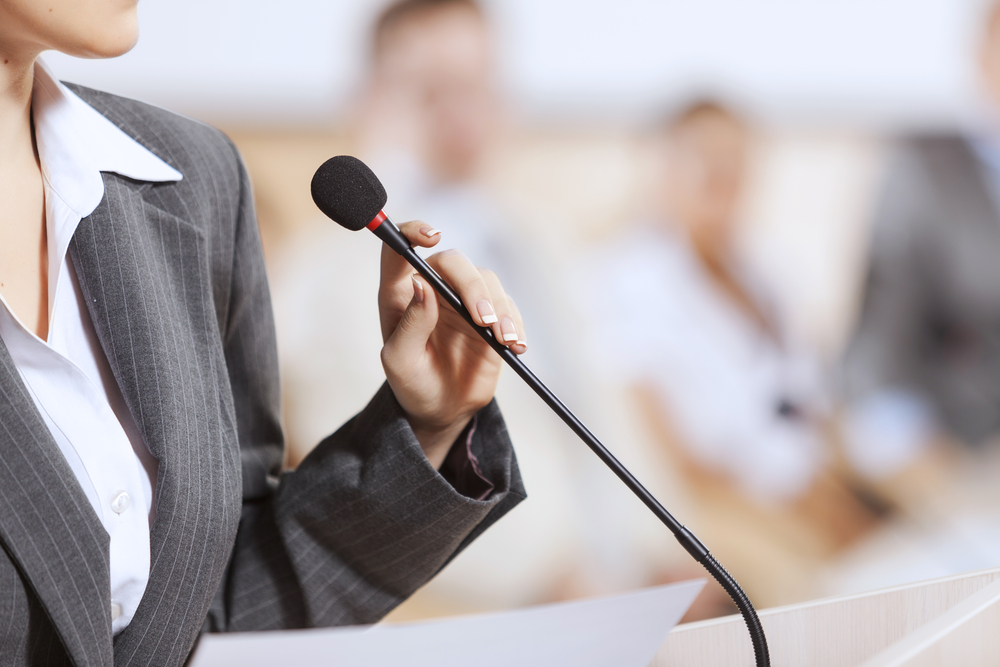I have the privilege of working with some of the most skilled trial lawyers in the country. They are an impressive group, possessing extensive knowledge of the law, unwavering work ethic, and expertise in the courtroom. In addition, they have an intangible charisma that allows them to command a room the moment they enter. Great trial lawyers can establish a magnetic rapport with judges and jurors that is awe-inspiring and hard to explain. As a trial consultant, we should observe this connection and let it propel us to victory.
Because of this natural charisma, many top trial lawyers worry that when they use PowerPoint slides to supplement their opening statements, judges and jurors may lose the personal connection they have worked their whole lives to learn. They point out, or I observe, that judges' and jurors' attention is often still fixed on the screen, even if they want to move on to the point not included in the slides. Should the jurors continue focusing on the screen or shift their attention to the lawyer? I know what we want them to do, and all too often, they do the opposite.
This is no trivial concern. There is something called the split attention effect, where audiences need help figuring out where to look and end up not remembering anything. There's also a closely related redundancy effect describing when lawyers show and read text. Again, the audiences remember less than they would have had you shown or read the text. You are not alone if you do this. I counsel on this topic very often.
It is important to note that great trial lawyers understand the importance of relying on something other than PowerPoint to make their case. While they recognize the seductive nature of this trial technique, they use it cautiously. PowerPoint has limits, and presentations should be varied with other tools like trial boards, models, and animation. I'm talking to you if you find yourself putting together a 100-slide deck replete with bullet points. This is not a helpful technique and damages your overall presentation and persuasiveness.
Fortunately, these concerns are exaggerated and quickly resolved. A straightforward solution is to press the "B" key on the computer keyboard. This action instantly turns the screen black, eliminating competition for the judge and jurors' attention. By seamlessly switching back and forth using this key, the crucial emotional connection between lawyer and judge/jury is preserved. It also lays the foundation for the lawyer to assume the role of a trusted counselor and friend in the judges'/jurors' minds. The lawyer becomes someone who can make sense of all the evidence and tell a compelling story that ties it all together.
Lately, I have become less enamored with the black screen. Sometimes, it feels like a power outage or a crashing laptop. That makes it very distracting—the opposite of what we are trying to do.
I had the opportunity to watch an opening statement by a talented trial attorney this week. He used the clicker to turn his PowerPoint off and on. I thought that was a good technique, but it could be better.
So here are some ideas to make it better:
- Plan and practice those pauses. Make it seem intentional rather than something surprising, even if you use a black screen. You could explain why you are utilizing this technique the first time you do it.
- Consider returning to your title screen or something equally innocuous.
- Remind the judge and jury of your theme by putting only two or three words on the screen. Put the clicker down or something else that shows that you won't advance the slides. You could even be talking to your trial tech and saying let's hold here for a minute. This must be well rehearsed and hopefully consistent with my 30-to-1 practice ratio.
- Consider going to a neutral screen, which is more consistent with your overall palette than black.
- Use an ellipse or a similar symbol to signal to the judge and jury, "When you see this, you can stop paying attention to the screen and look at me because I want to connect with you."
If only all the dilemmas faced by trial lawyers were as quickly resolved.
Other Persuadius free resources related to PowerPoint, connecting with jurors, and what makes a great trial lawyer include:
- Powerful PowerPoint Presentation Tips: Ditch the Bullet Points!
- 10 Criteria that Define Great Trial Teams
- 16 PowerPoint Litigation Graphics You Won't Believe Are PowerPoint
- The 12 Worst PowerPoint Mistakes Litigators Make
- Like It or Not: Likability Counts for Credibility in the Courtroom
- How Many PowerPoint Slides Should You Use in a Typical Trial?
- The Redundancy Effect, PowerPoint and Legal Graphics
- 12 Things About PowerPoint You Probably Never Knew
- How to Make PowerPoint Trial Timelines Feel More Like a Long Document
- New Webinar - PowerPoint Litigation Graphics - Winning by Design
- Lawyer Delivers Excellent PowerPoint Presentation
- Why Reading Your Litigation PowerPoint Slides Hurts Jurors
- How Much Text on a PowerPoint Slide is Too Much?
- 12 Ways to Eliminate "But I Need Everything On That PowerPoint Slide"
- Do Professionally Designed PowerPoint Slides Get Better Results?
- 12 Reasons Bullet Points Are Bad (in Trial Graphics or Anywhere)
- 14 Tips for Delivering a Great Board Meeting Presentation
- 5 Things Every Jury Needs From You
- Jury Selection and Voir Dire: Don't Ask, Don't Know
- 10 Things Every Mock Jury Ever Has Said
- Your Trial Presentation Must Answer: Why Are You Telling Me That?






Leave a Comment